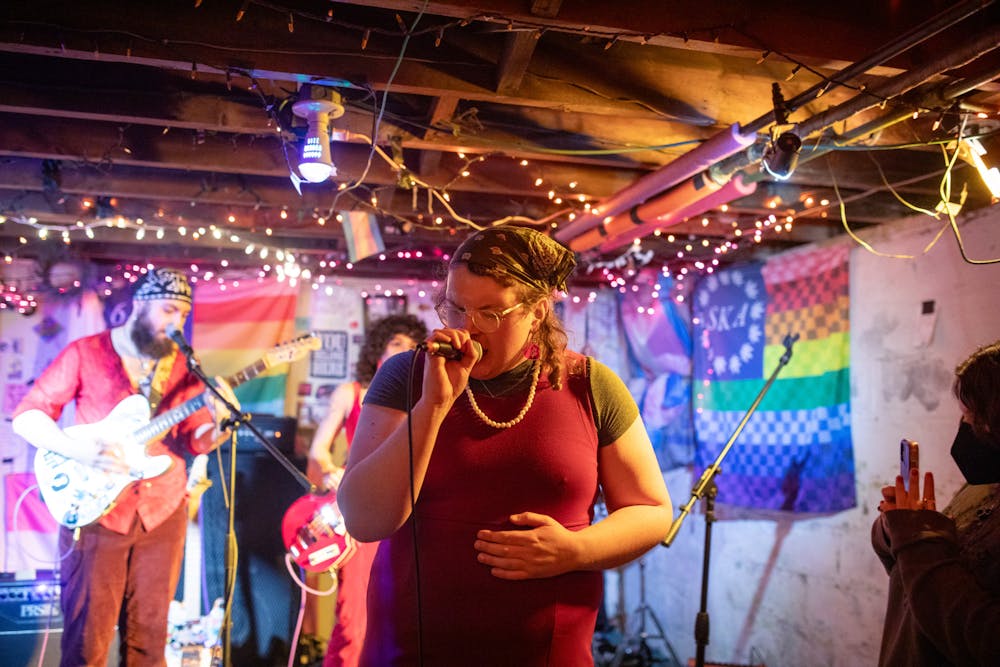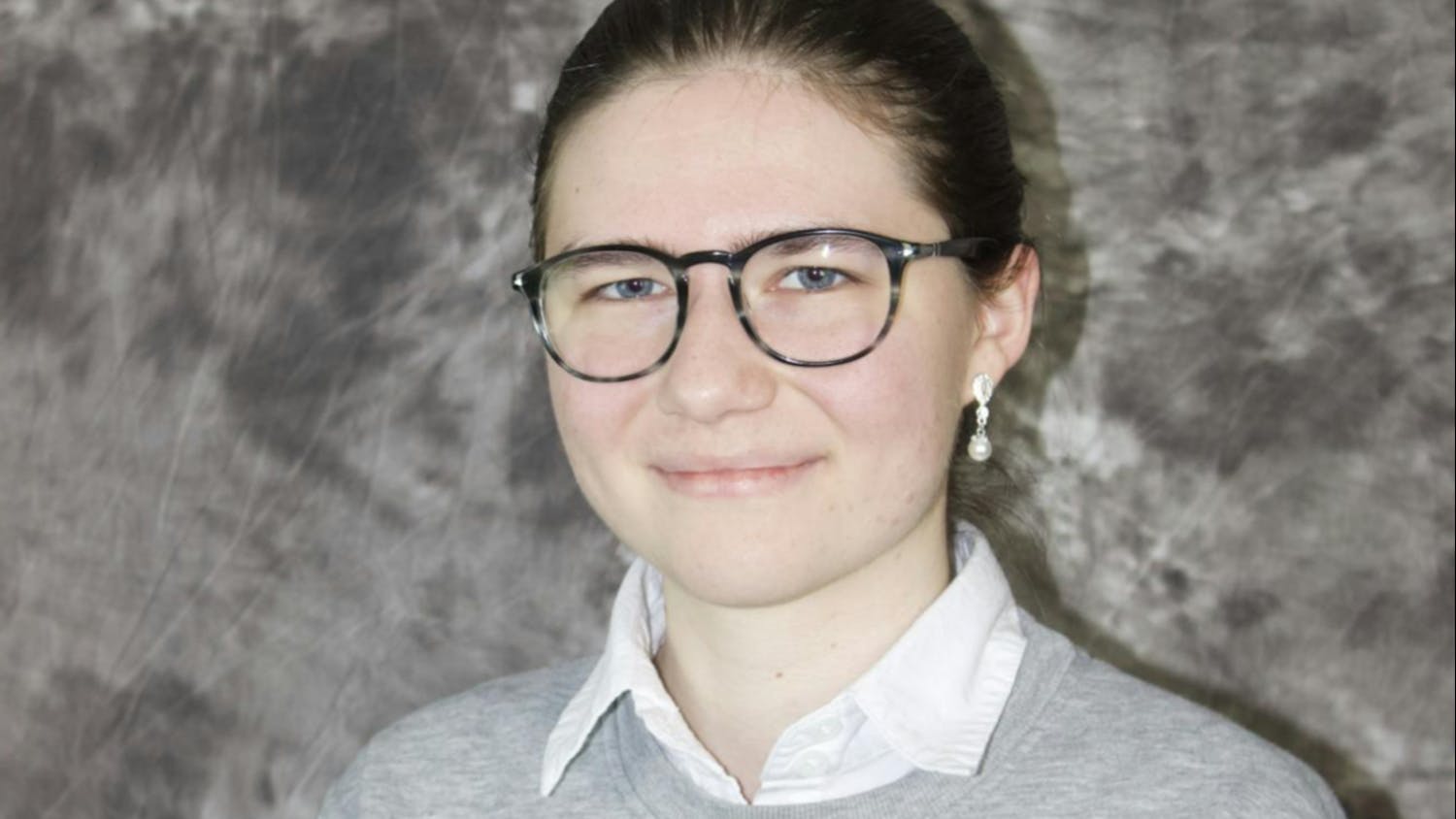Some of the most captivating performances in Buffalo aren’t happening in large venues or popular bars.
They’re happening beneath one Tonawanda house, known only as “The Lavender Room.”
Show attendees descending the wooden stairs into the performance space will find an unfinished basement adorned with Christmas lights, setlists of shows past and pride flags. The stage — made of several small wood pallets — sits on one end of the basement. .
The Lavender Room’s mission is to help those in need with any profits made, while also providing a fun and safe night out.
The Lavender Room regularly hosts punk and indie bands (many from out of state), drag shows and other performances designed to welcome attendees into a larger community. Organizers center the venue around mutual aid and creating a space where queer people and other marginalized people can feel safe to express themselves.
“We aren’t just trying to highlight any one genre of music — or even just music at all — but trying to really diversify what queer art can be and how queer art can be a community organizing tool,” Jare Curtis, the Lavender Room’s primary organizer, said.
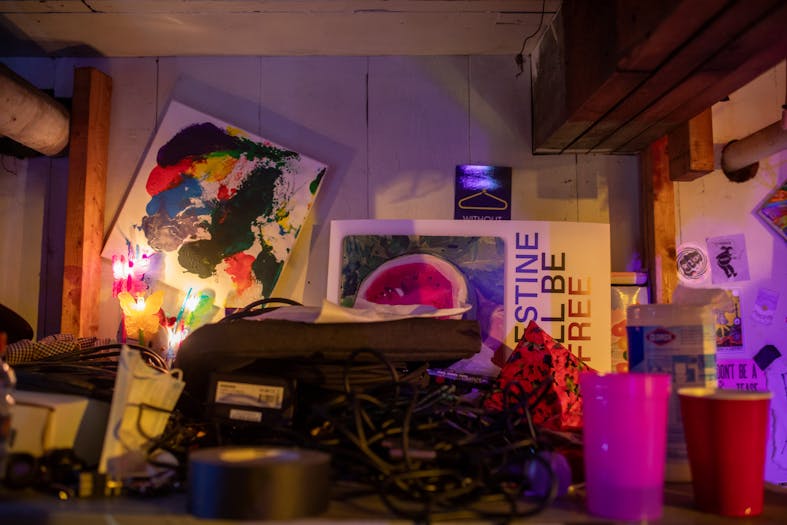
The Lavender Room’s decor is curated for that express purpose: drag queen props, show flyers and framed photos of gay liberation activists Marsha P. Johnson and Sylvia Rivera are plastered all over the walls.
“I cried a little bit when I hung them up. I remember it because I felt like I was starting gay ‘Cheers,’” Curtis said. “Other spaces get to put Frank Sinatra on the wall. We got to put Marsha and Sylvia there.”
Another fan-favorite is the “Dairy Queen closes at 9:30” sign above the stage.
“The running joke is that if you go to a Lav Room show, no one’s ever in the basement because they’re either smoking a cigarette in the driveway, or they’re going to Dairy Queen in between sets,” Curtis said. “It’s crazy, 80 people will be there during the set and then it will be completely empty for like 15 minutes, and then they'll all fill right back in again — and also everyone has milkshakes now,” Curtis said.
Curtis, who graduated from UB with a bachelor’s degree in English, didn’t stumble into her role as the Lavender Room’s lead organizer. She has a storied past with music scenes in multiple cities, but got her start in the Maine punk scene.
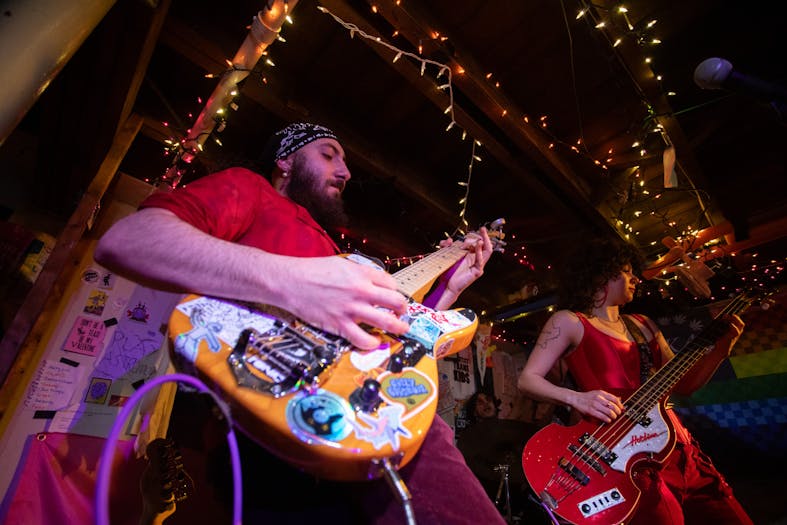
As much as she loved that scene and its anti-establishment values, Curtis couldn’t help but notice a darker side of the scene’s culture: it prioritized straight white men, tolerated skinheads and gate-kept access from queer, trans, disabled, and indigenous people and people of color.
When she started Lavender Room, Curtis wanted to create a more welcoming and accepting venue.
“It is more punk to let any kind of person in regardless of who they are and not maintain hierarchy,” she said. “What I do think is radical, and what I do think punk is saying is ‘as long as you are not perpetuating harmful action, anyone is welcome in this space.’”
“The first time I saw anyone shoot heroin I was 14 years old, and that had an impact on me,” Curtis said. “I also saw the ways that masculinity, drug use, misogyny and racism negatively impact not only the person that that is perpetuated on to, but also the person who’s perpetuating it and how they’re connected to larger systems of oppression in our world and in our country,” Curtis said.”
Despite embracing the anti-establishment ideals that Curtis values today, she was keenly aware of a culture in the scene that continued to prioritize straight white men, tolerate the presence of skinheads, and gate-keep access from queer, trans, disabled, and indigenous people and people of color.
That view has shaped how mosh pits work at Lavender Room. The mosh pits Curtis saw in Maine were excessively violent, which prevented a lot of people from participating. Moshing at Lavender Room is conducted in a way where smaller people are not hit too hard for them to handle.
“People will tell me that they never thought that a mosh pit was a place for them,” Curtis said. “They had always felt intimidated by it because what they knew of that scene was a bunch of dudes kicking and punching each other. Honestly, moshing to me is like a form of drag. It is a way that somebody is able to express how they feel about their place in the world through their own expression.”
Curtis moved to Buffalo alongside friends in August 2022. Shortly after that move, they decided to use the basement as the venue for Curtis’ birthday party, complete with musical performances by their friends.
They originally thought “Theyfest ‘98,” as it came to be called, would be a one-off party. But its success made the housemates reassess.
“We had a ton of fun, and I was like, ‘Oh, this is really great. We could keep doing this if we wanted to,’” Curtis said.
They named their new venue “The Lavender Room,” a nod to the Lavender Scare, the moral panic about queer people serving in the federal government during the Cold War. The scare led to the mass dismissal of queer civil servants during the early 1950s.
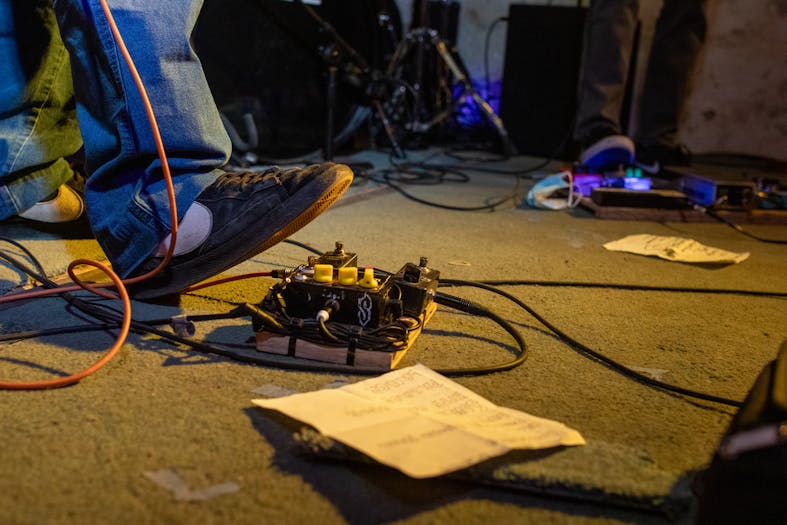
The first show at The Lavender Room, dubbed “My C–ty Valentine,” took place in February 2023, when the group was looking for a safe and queer friendly space to hold another friend’s birthday celebration — something they had trouble finding elsewhere.
“I had been in a lot of queer spaces that didn't really feel like queer spaces for me,” Curtis, who is trans, said. “It felt as if myself and a lot of my friends — who were a lot of trans people or non-binary people and women and people of color — did not feel like they had an inclusive, diverse queer space that was made for them with their safety and their interests in mind.”
Curtis believes in the power of calling Lavender Room a “queer space” — a term that she says transcends sexuality and gender identity and radically reclaims a word formerly used to oppress and spread hate. She’s seen first hand the magic of providing a queer-friendly environment.
“I’ve seen folks who come to one show, and you would probably identify them as a cis man. They come in jeans and a T-shirt and hang out in the back,” Curtis said. “They come another time, and maybe their sense of style is a little more laid back, maybe they talk to people more. Fourth or fifth time they come, and they’re in a friggin’ halter top and a blouse, or a skirt, or short shorts and a tank top, or a dress or whatever. Their expression is changing.”
She says some show attendees have expressed that her basement is the only space where they can truly be themselves.
“We have a long way to go as a society overall when my stinky basement has to be the place where you really get to be who you are, but also it’s a beautiful thing and it’s a start,” Curtis said.
Because of their philosophy of acceptance, the Lavender Room’s organizers run things a little differently than most concert venues. They have a “NOTAFLOF” door policy: No One Turned Away For Lack Of Funds, another way to say “pay what you can.”
Shows are priced as cheap as possible to help eliminate financial barriers of entry while still generating pay for artists, keeping the venue going and contributing to mutual aid organizations.
Staff — including those who handle payment at the door, take photos, run security and serve food — are all volunteers. Beyond the event-specific staff is a core admin group that makes decisions on larger policy issues and finances.
Some of the money raised goes to organizations helping communities locally and globally, such as the Palestinian Children’s Relief Fund, the Transgender Law Center, Sylvia Rivera Law Project, Safe Bay, Buffalo Community Fridges, Buffalo Mutual Aid Network and BLR Buffalo.
Of course, hosting a venue in the basement of a residential house does come with its problems: People wandering into sections of the house they shouldn’t, rehearsals that disturb its occupants, dirty floors, the looming threat of noise complaints and a semi-public address all come with the territory.
“There’s also just a blurrier line because my house is a community space for a lot of people. So sometimes there’s a person who I don't really like, who I don’t want to have in my house, but I don’t necessarily think that they need to be barred from getting to participate in a larger community just because I don’t like them. So now they have to be in my house,” Curtis said. “I also have to buy a lot more toilet paper than I otherwise would have to.”
The six-person house is extending their lease for another year. Then, it may be time for Curtis, who has lived with 33 different people since she was 18, to move out.
“I’m kind of getting over it and ready to just live in a tiny apartment with my girlfriend and not have strangers in my house on a regular basis,” Curtis said. “But I also love what we’re doing, and I don’t want it to stop right now.
But there’s a chance Lavender Room moves with Curtis. She hopes to one day pack up the storied decorations in the basement and move the venue into a larger, non-residential space.
If nothing else, the spirit of Lavender Room might spread beyond Buffalo and become a blueprint for other cities.
“If it worked in f–king Buffalo, New York, it can work in other places,” Curtis said.
Dominick Matarese is the senior features editor and can be reached at dominick.matarese@ubspectrum.com

Dominick Matarese is the Senior Features Editor at the Spectrum. He enjoys writing about interesting people, places, and things. In addition to running an independent blog, he has worked worked with the Owego Pennysaver, BROOME Magazine, the Fulcrum Newspaper, and Festisia. He is passionate about music journalism and can be found enjoying live music most weekends.

